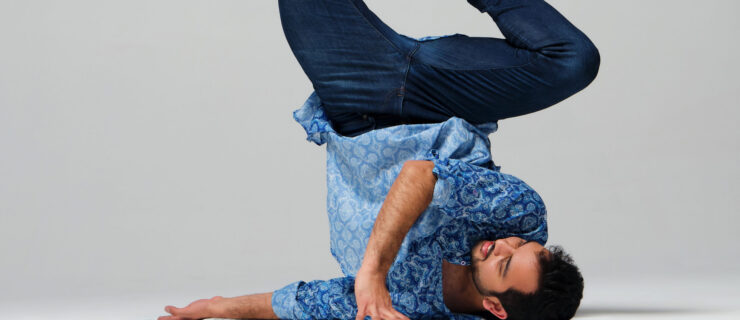Should Dancers Check Out These Trendy New Stretch Studios?
It’s hard to find a dancer who doesn’t want to increase their flexibility in at least one part of their body. So one of 2019’s biggest fitness trends caught our attention: Dozens of stretch studios have been popping up across the country, from boutique companies like LYMBR and Stretch*D, to the national franchise StretchLab with its 75 locations.
Stretch studios seem like a great idea for people who’ve never been able to touch their own feet, but could they also be helpful for dancers?
What’s Offered
One-on-one assisted stretch sessions can last anywhere from 15 to 70 minutes, with prices ranging from roughly $30 to $150 (although all sorts of packages are offered to encourage repeat visits).
Stretchers typically assist clients through both static and dynamic stretches, and might use specific methods like proprioceptive neuromuscular facilitation, in which you contract certain muscles to get a deeper stretch.
Many stretch studios also offer group sessions. StretchLab, for instance, gives 50-minute classes for up to six people, incorporating props like yoga straps and foam rollers. StretchChi in Chicago offers three-hour workshops to dive into the root causes of flexibility issues.
Who’s Stretching You
Most studios certify their stretchers in their own method, so the training and qualifications can vary depending on where you go. At LYMBR, for example, all stretch therapists are required to get a national certification in personal training before going through 150 hours of training in the LYMBR Method. Other studios require far less.
Unsurprisingly, if you’re browsing through the bios of professional stretchers, you’ll find a number have dance backgrounds themselves. Many also have certifications in related fields like corrective exercise, Pilates, massage or yoga.
Should Dancers Try It?
As much as dancers need extreme ranges of motion to meet the demands of today’s choreography, some dance medicine specialists are starting to believe that simply stretching more is not best the way to get there. Experts like Dr. Sue Mayes, principal physiotherapist at The Australian Ballet, advise dancers against long passive stretches, arguing that what dancers really need is strength, because muscles get tight when they’re over-fatigued.
“The more I learn about the body, the less I recommend stretching,” says physical therapist Alexis Sams of AZ Dance Medicine Specialists. She believes dancers who struggle with flexibility need to find—and address—the root cause. “Trying to increase mobility without identifying what’s holding it back can either restrict motion somewhere else, or damage the area that’s being ‘forced’ to stretch when it’s protecting something.”
Lastics Stretch Technique
creator Donna Flagg, who teaches at dance studios like Broadway Dance Center and Steps on Broadway, is obviously a fan of stretching, but finds little benefit in having someone do it for you. While she admits that it can feel good to be physically manipulated (just like a massage), and it will loosen you up a bit temporarily, she believes assisted stretching won’t fundamentally change your flexibility: “If you don’t control your muscles, they don’t learn,” she says.
The bottom line? Booking a personal stretch session might be a nice way to treat yourself, but don’t expect it to magically transform your développés.





